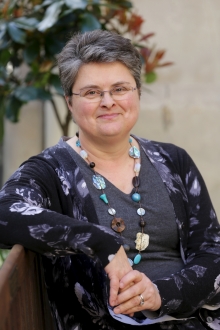INCREASING THE FLOW OF CAPITAL FOR GOOD - INVESTING AND GIVING

Download this article as a PDF.
St John’s Hospital is a locally focused charity in Bath, which has grown since 1174 to become a major philanthropic charitable foundation, built on gifts of land and buildings over the last 840 years. For all that time we’ve been providing almshouse accommodation and support to individuals and organisations in and around the city.
Our philanthropy includes making grants to individuals in financial crisis and charities working locally with disadvantaged people and communities.
In September 2014 we launched a £4m Social Investment Programme and recently paid out our first loan to a charity working with carers across our region of Bath and North East Somerset. Our decision to engage with social investment enables us to support organisations over a longer period. Loans and investment can help organisations to become financially independent and sustainable over time, to refocus on their mission and reduce reliance on short-term contracts and grants. We’re using this additional tool alongside our grant making to enable our money to reach more local people and to make a greater positive impact.
There’s still considerable talk by central government about the benefits of social investment, including a range of new financial instruments such as social impact bonds. However, smaller and medium-sized local organisations find this agenda difficult to engage with. The financial landscape continues to change around them, with potentially reducing sources of income, which may impact on their long-term viability. As a result, many Boards continue to adopt a conservative attitude to financial risk and remain anxious about taking on debt and investment.
In 2015 we conducted a social investment survey locally, which showed that while the majority of respondents understood the benefits of taking out a loan through a social investor, such as shared values and greater long-term support, there were few ready to expand their borrowing to grow and develop their activities. More than half had not sought to borrow money over the past two years while, of those who had, 12% had failed to raise funds using traditional methods, such as mainstream banks.
Despite this, a third of those questioned said that they considered themselves ‘well informed’ about the benefits of social investment and more than half (53%) said they thought they knew ‘more than average’.
Probably our biggest challenge, as a ‘place-based’ foundation, is to grow our local market to generate new investment applications. We need to do this by building knowledge and confidence about what social investment is as well as how it can help organisations to become financially sustainable in a changing world. We’ve been tackling this by talking to lots of people and local networks, running free seminars with local and national practitioners giving presentations as well as collaborating on some academic research with the University of Bath about how third sector boards make financial decisions. This is something we’ll continue to do in 2016.
We’ve also started the process of trying to measure the impact our money makes across our grant making and social investment using existing best practice. This is a new activity for St John’s and is work in progress. Local organisations recognise they have to do more about measuring the impact they make but, with their resources already stretched, this is quite an ask.
So we’ve developed an impact measurement tool, to start having those conversations when we make our own decisions. This then enables us to talk to organisations about what information they have available and to collect both quantitative and qualitative data to build the evidence of how our money is making a difference in our local area.
Social investment isn’t new and won’t be right for every organisation. However, loans or investment can provide an opportunity for those organisations that want to become more enterprising and grow and develop. This doesn’t replace grant making but sits alongside the new range of options available to local organisations.
We’ll continue to see how this form of philanthropic investment can shape the funding landscape in and around Bath, and help third sector organisations to become more financially resilient and able to respond to growing areas of local social need.
This article was first appeared in Issue 11 of Philanthropy Impact Magazine. Download this article as PDF.





